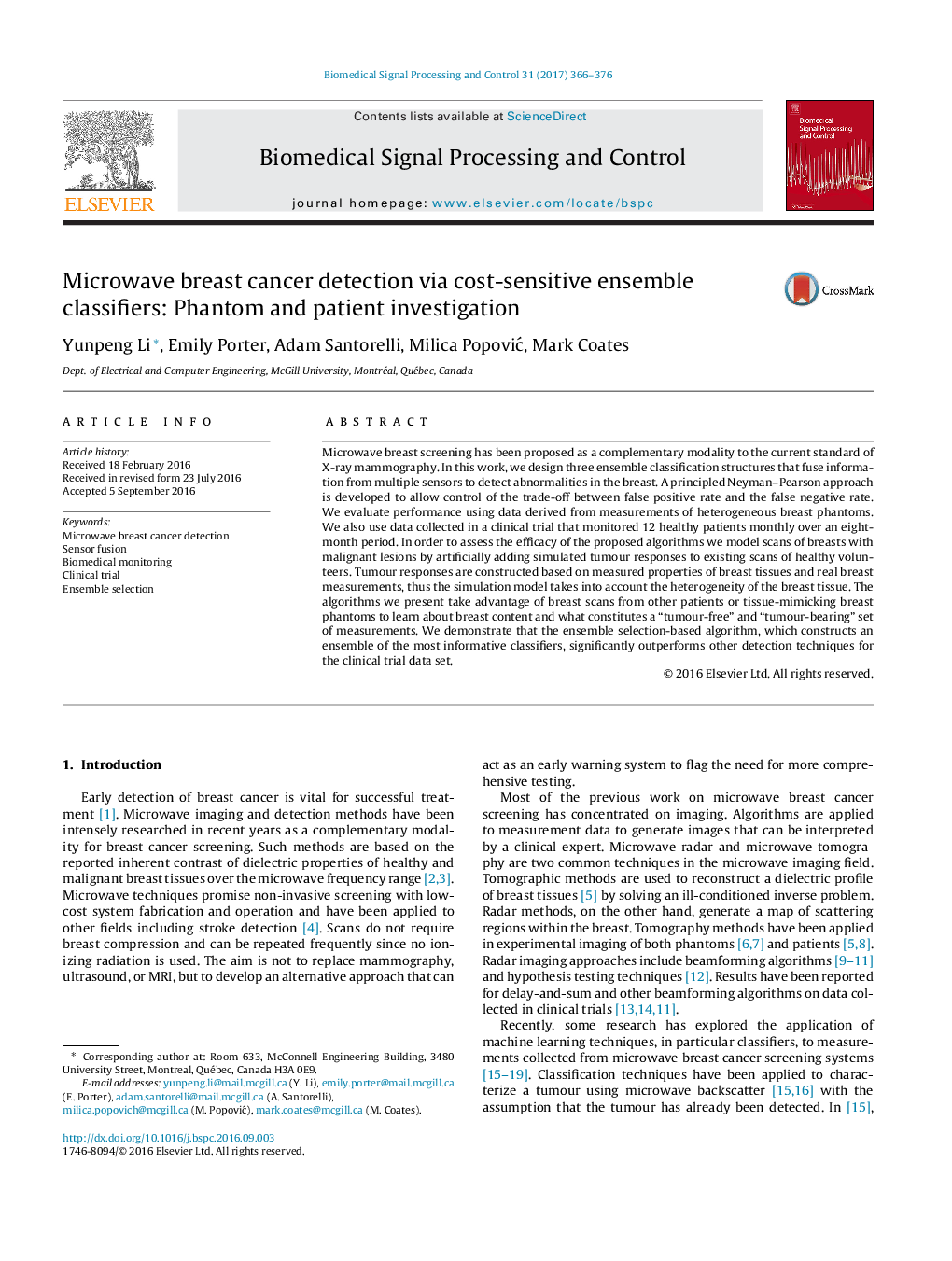| Article ID | Journal | Published Year | Pages | File Type |
|---|---|---|---|---|
| 6951124 | Biomedical Signal Processing and Control | 2017 | 11 Pages |
Abstract
Microwave breast screening has been proposed as a complementary modality to the current standard of X-ray mammography. In this work, we design three ensemble classification structures that fuse information from multiple sensors to detect abnormalities in the breast. A principled Neyman-Pearson approach is developed to allow control of the trade-off between false positive rate and the false negative rate. We evaluate performance using data derived from measurements of heterogeneous breast phantoms. We also use data collected in a clinical trial that monitored 12 healthy patients monthly over an eight-month period. In order to assess the efficacy of the proposed algorithms we model scans of breasts with malignant lesions by artificially adding simulated tumour responses to existing scans of healthy volunteers. Tumour responses are constructed based on measured properties of breast tissues and real breast measurements, thus the simulation model takes into account the heterogeneity of the breast tissue. The algorithms we present take advantage of breast scans from other patients or tissue-mimicking breast phantoms to learn about breast content and what constitutes a “tumour-free” and “tumour-bearing” set of measurements. We demonstrate that the ensemble selection-based algorithm, which constructs an ensemble of the most informative classifiers, significantly outperforms other detection techniques for the clinical trial data set.
Related Topics
Physical Sciences and Engineering
Computer Science
Signal Processing
Authors
Yunpeng Li, Emily Porter, Adam Santorelli, Milica PopoviÄ, Mark Coates,
